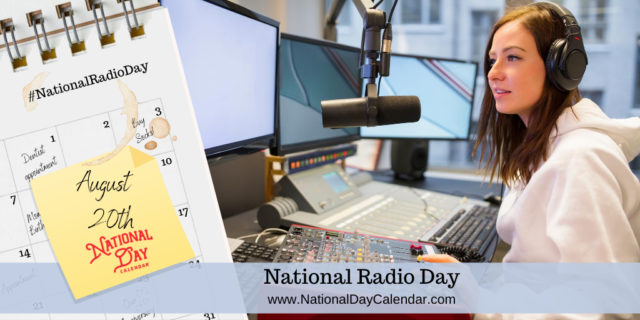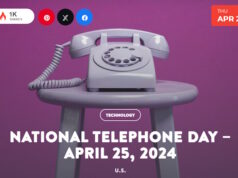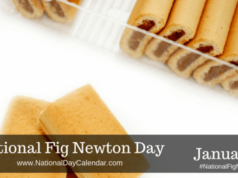
On August 20th, National Radio Day recognizes the great invention of the radio. Celebrate the news, information, music, and stories carried across the airwaves.
Several inventors participated in the invention of the radio in the late 1800s. Amazingly, not just one person can be credited with its beginning. Instead, each component developed through invention and discovery. As these technologies converged, the radio came to life.
- In Germany, Heinrich Hertz’s research proved electricity could be transmitted wirelessly.
- Elsewhere, the prolific inventor Nicola Tesla patented multiple inventions. He provided the radio with the Tesla coil. Born in Croatia, Tesla also contributed many patents involving alternating current. Not only did Tesla make the radio possible, but he also advanced the science and production of numerous other inventions.
- However, when it comes to the first commercially available wireless, Italian, Guglielmo Marconi receives the honor.
- On December 12, 1901, Guglielmo Marconi transmitted the first radio signal across the Atlantic Ocean.
- In 1912, a Marconi wireless broadcast the Titanic’s distress signal.
- In 1906, Reginald Fessenden created the first radio broadcast of voice and music purely for entertainment purposes aired. He transmitted the program from Brant Rock, MA, for the general public to hear.
- An American contributor to the radio, Lee de Forest, invented the Audion vacuum. This invention made live broadcasting possible. Born in Iowa in 1873, de Forest would become the chief scientist for the first U.S. radio firm, American Wireless Telephone, and Telegraph.
- Aug. 20, 1920, the first commercial radio station began broadcasting
- In 1921 The New York Giants’ World Series win over the New York Yankees is the first sports broadcast on radio.
- 1921 Radio speakers replace headphones, allowing radio broadcasts to be enjoyed by more than one person at a time.
- Radio ownership grew. In 1931, two out of five homes owned a radio. By 1938, four out of five owned a radio.
- On November 2, 1920, Westinghouse Electric and Manufacturing broadcast the voter returns for the 1920 presidential election. They broadcast out of Pittsburgh, PA, under the call sign KDKA.
- 1926 Radio’s first commercial jingle airs for Wheaties.
- 1933 President Franklin Roosevelt turns to radio to talk with the nation in “fireside chats.”
- 1952 First miniature transistor radios sold by Sony—radio headphones again become useful.
- 1971 AM-FM radios become standard in new cars.
- According to FCC statistics, there are more than 15,000 licensed broadcast radio stations operating in the U.S.
- 1994 Radio broadcasts streamed over the web. The first 24-hour Internet-only radio station begins operation.
- On October 1, 1999, the first satellite radio broadcast occurred. Worldspace aired the broadcast in Africa.
- 2004 A new term is coined for Internet delivery of radio-style content: “Podcasting”
- 70% of Americans tune in to radio for 2 hours and 40 minutes each day.
- 1 out of every 5 Americans has watched a video podcast.
- A voice broadcast over the radio travels at 700 miles per hour. It can be heard 13,000 miles away— sooner than it can be heard at the back of the room where it originated.
- The most powerful commercial radio station ever was WLW (700KHz AM), which during certain times in the 1930s broadcasted 500kW radiated power. At night, it covered half the globe. Neighbors within the vicinity of the transmitter heard the audio in their pots, pans, and mattresses. – Source
- Most of the radio broadcasts that Robin Williams delivered in the movie “Good Morning Vietnam” were improvised by him. – Source
- The number one most played song on U.S. radio of the 2000s decade was “How You Remind Me” by Nickelback. It was played on the radio over 1.2 million times. – Source
- The first instance of Telephone hold music was a mistake that was caused by a loose piece of wire touching a metal girder at a factory. It turned the building into a giant radio antenna that would play music from a next-door radio station when people were put on hold. – Source
Sources:












